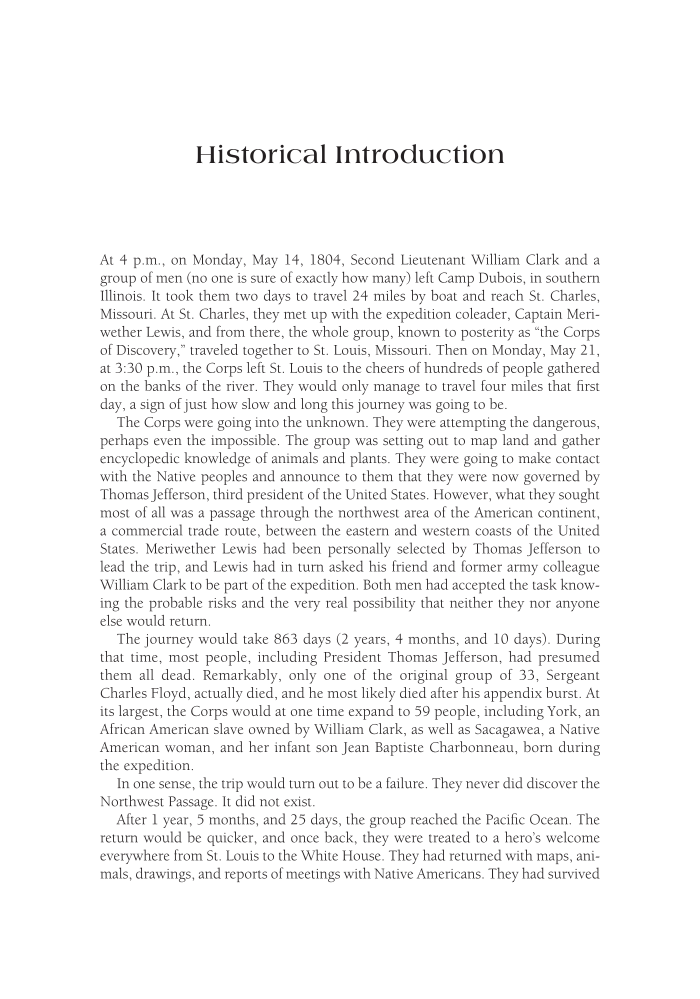At 4 p.m., on Monday, May 14, 1804, Second Lieutenant William Clark and a group of men (no one is sure of exactly how many) left Camp Dubois, in southern Illinois. It took them two days to travel 24 miles by boat and reach St. Charles, Missouri. At St. Charles, they met up with the expedition coleader, Captain Meri- wether Lewis, and from there, the whole group, known to posterity as “the Corps of Discovery,” traveled together to St. Louis, Missouri. Then on Monday, May 21, at 3:30 p.m., the Corps left St. Louis to the cheers of hundreds of people gathered on the banks of the river. They would only manage to travel four miles that first day, a sign of just how slow and long this journey was going to be. The Corps were going into the unknown. They were attempting the dangerous, perhaps even the impossible. The group was setting out to map land and gather encyclopedic knowledge of animals and plants. They were going to make contact with the Native peoples and announce to them that they were now governed by Thomas Jefferson, third president of the United States. However, what they sought most of all was a passage through the northwest area of the American continent, a commercial trade route, between the eastern and western coasts of the United States. Meriwether Lewis had been personally selected by Thomas Jefferson to lead the trip, and Lewis had in turn asked his friend and former army colleague William Clark to be part of the expedition. Both men had accepted the task know- ing the probable risks and the very real possibility that neither they nor anyone else would return. The journey would take 863 days (2 years, 4 months, and 10 days). During that time, most people, including President Thomas Jefferson, had presumed them all dead. Remarkably, only one of the original group of 33, Sergeant Charles Floyd, actually died, and he most likely died after his appendix burst. At its largest, the Corps would at one time expand to 59 people, including York, an African American slave owned by William Clark, as well as Sacagawea, a Native American woman, and her infant son Jean Baptiste Charbonneau, born during the expedition. In one sense, the trip would turn out to be a failure. They never did discover the Northwest Passage. It did not exist. After 1 year, 5 months, and 25 days, the group reached the Pacific Ocean. The return would be quicker, and once back, they were treated to a hero’s welcome everywhere from St. Louis to the White House. They had returned with maps, ani- mals, drawings, and reports of meetings with Native Americans. They had survived Historical Introduction
Document Details My Account Print multiple pages
Print
You have printed 0 times in the last 24 hours.
Your print count will reset on at .
You may print 0 more time(s) before then.
You may print a maximum of 0 pages at a time.
































































































































































































































































































